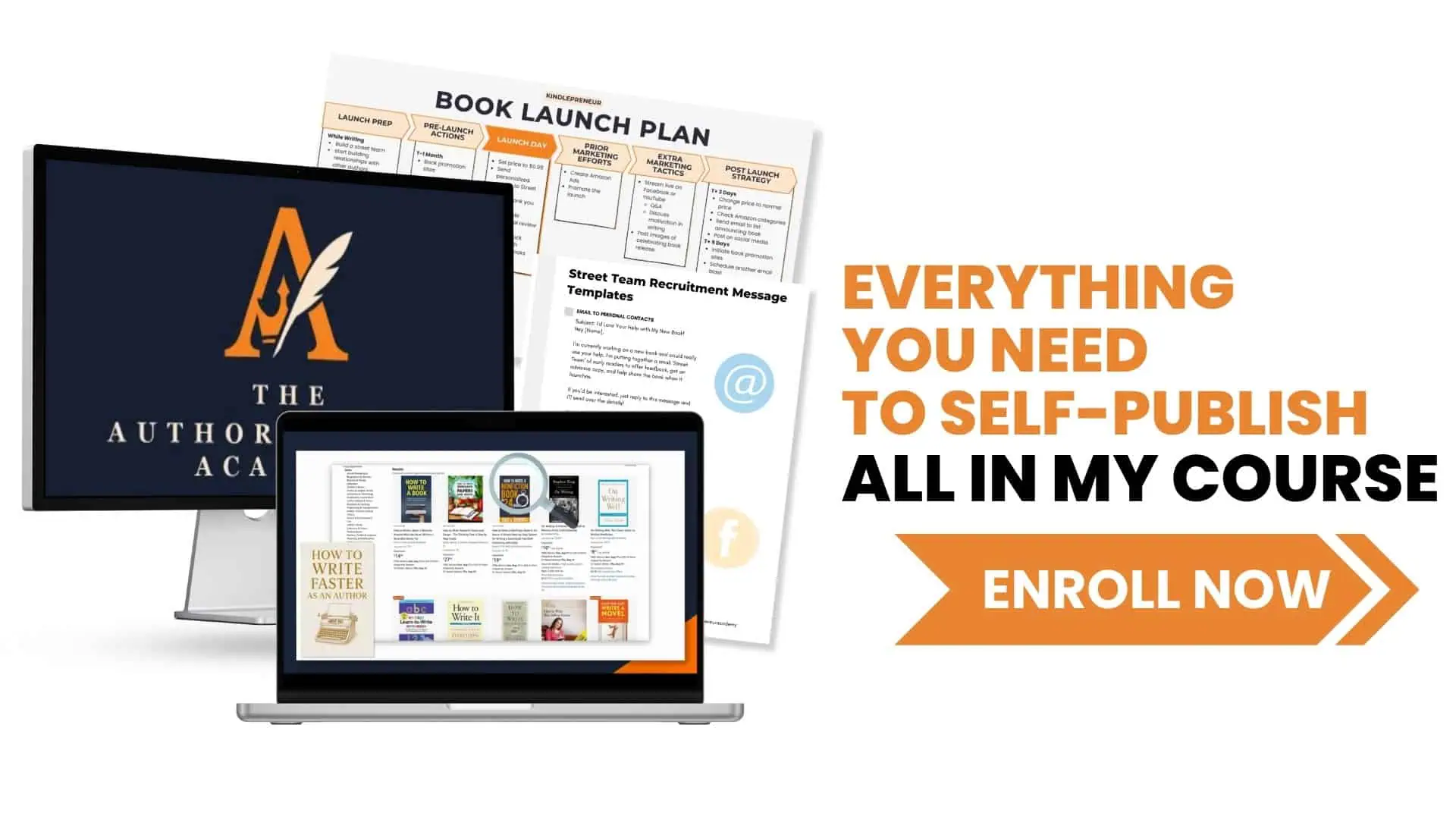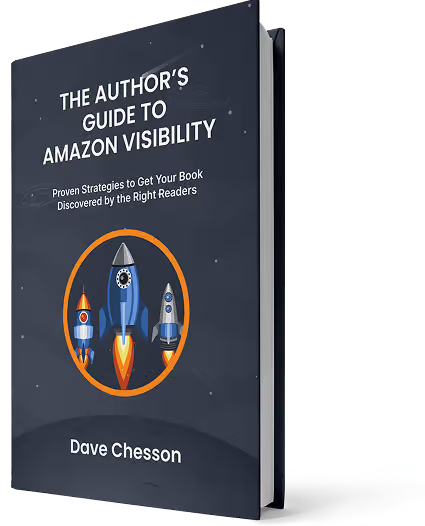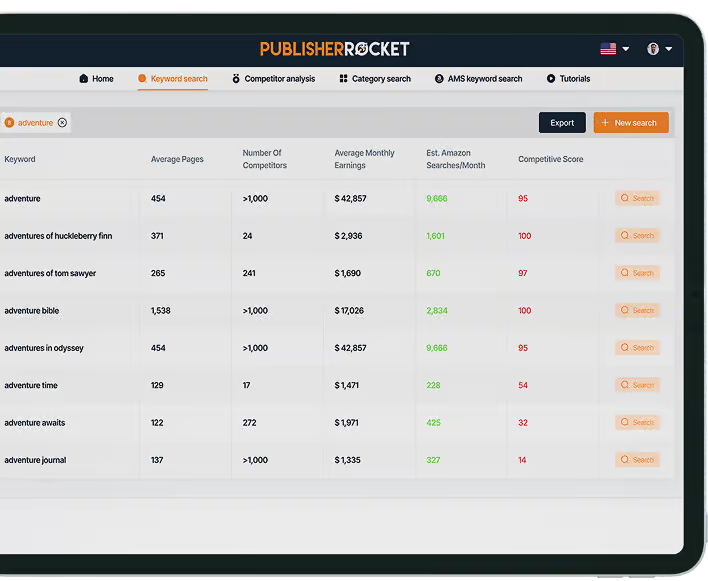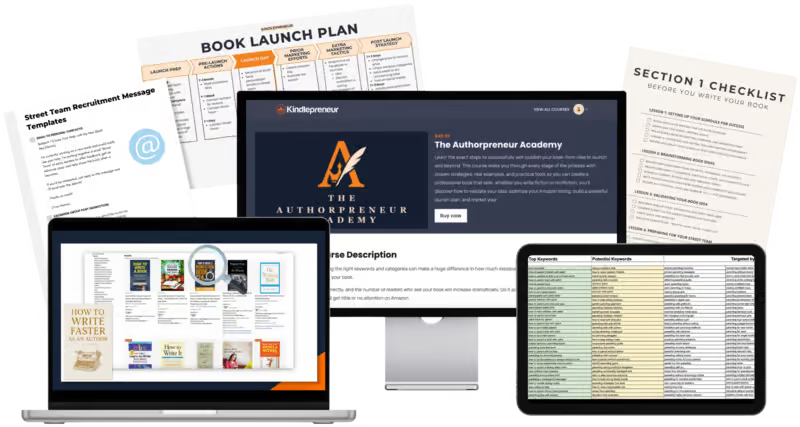Most articles about writing styles do the same thing:
They define the four “official” styles — narrative, descriptive, expository, persuasive — using vague textbook language…
…and then they quietly back away before you realize you’re still not sure how any of it works.
This is not one of those articles.
If you’ve ever wondered:
- What’s the difference between descriptive and narrative?
- Which style is best for what I’m writing?
- Can I mix styles? (Spoiler: yes — and you probably already are)
- How do real authors use these in the wild?
You're in the right place.
In this guide, you’ll get:
- Definitions that make sense
- Real book excerpts that show each style in action
- Commentary that’s clear and (gasp) entertaining
- Short “Is this right for you?” guides
- And even a quiz at the end
We’ll also talk about how most good writing isn’t just one style — and why that’s not a problem. It’s a sign you’re doing it right.
Let’s start with the one readers know best — and writers often get wrong.
#1. Narrative Writing Style
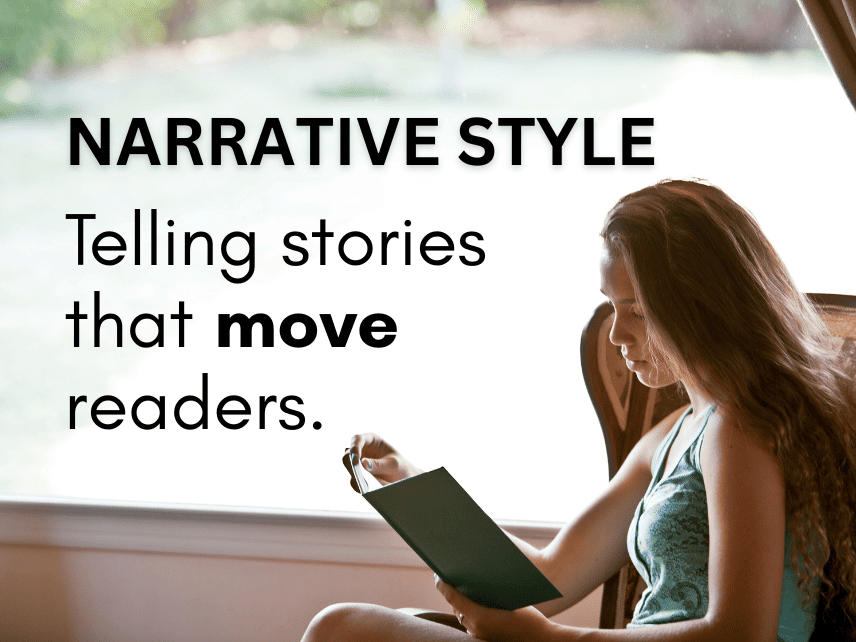
Let’s start with the crowd favorite: narrative writing — the style that tells a story.
This is what most people think of when they hear “writer.” Novels, memoirs, screenplays, short stories, epic fantasy trilogies that end in heartbreak — all of it lives under the narrative umbrella.
What It Is
Narrative writing is all about plot, characters, and progression. There's usually a beginning, middle, and end. Someone wants something, something gets in the way, and eventually… something happens.
Even nonfiction books can use narrative style — think memoirs or case study-heavy business books. The goal is the same: tell a story that keeps the reader turning pages.
Real Example (Fiction)
“The man in black fled across the desert, and the gunslinger followed.”
— Stephen King, The Gunslinger
That one sentence drops you right into a pursuit, paints a setting, and hints at a larger world. No exposition, no setup — just tension, movement, and mystery. It’s pure narrative fuel.
Real Example (Memoir)
“When I was five years old, I walked into my parents’ bedroom and saw my father pointing a gun at my mother’s head.”
— Tara Westover, Educated
That’s narrative nonfiction at its most gripping. It gives you no choice but to read on.
What to Look For
- Characters with goals (and problems)
- A clear sequence of events — time matters here
- Conflict, change, and consequence
- Often written in first- or third-person, past tense
- Dialogue is common, description is present, but the plot keeps moving
Whether it’s a thriller or a heartwarming coming-of-age story, narrative writing works by pulling you into a world and making you care what happens next.
Is This Style Right for You?
✅ Yes, if:
- You’re writing fiction of any kind
- You’re writing a memoir or case-driven nonfiction
- You want to take the reader on a journey
❌ No, if:
- Your book is a how-to guide, not a story
- You’re allergic to plot or hate the idea of character arcs
Tweetable Takeaway (aka X-cellent Insight)
If your reader doesn't care what happens next, the twist won't matter anyway.
If you want to master narrative writing, read great stories. Pay attention to what makes you care. And remember — it’s not about fancy sentences…
It’s about making the reader feel something real.
#2. Descriptive Writing Style
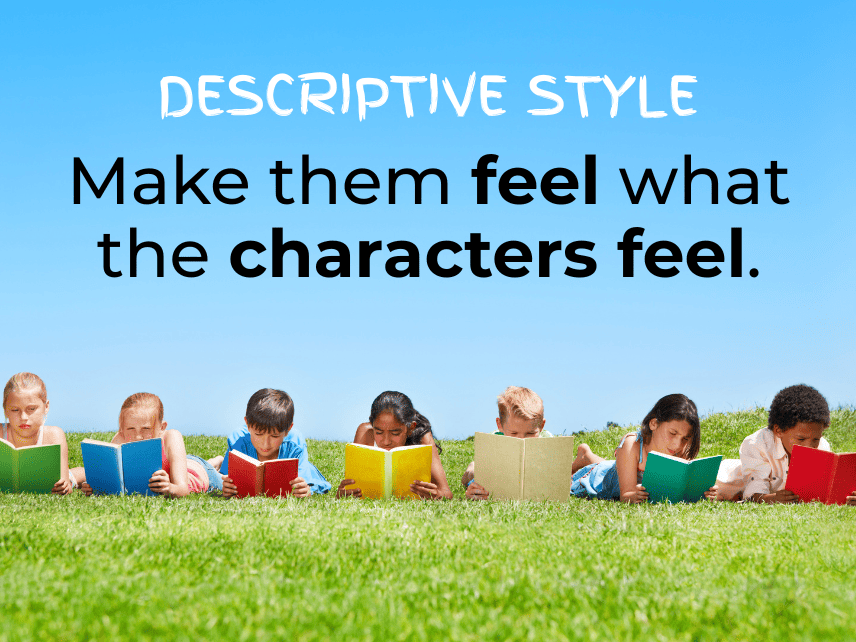
If narrative is about what happens, descriptive writing is about how it feels while it’s happening.
Descriptive writing zeroes in on the sensory details — the colors, the smells, the atmosphere, the mood. It slows things down so the reader can see the world the way the character sees it… or how the author wants it to be felt.
It’s not just “flowery language.” When done well, it’s immersive. When overdone, it’s like being stuck in a poetic fog with no exit.
What It Is
Descriptive writing paints a picture with words. It leans on metaphors, imagery, and sensory language to shape how the reader experiences the scene.
You’ll find it in:
- Literary fiction
- Poetry
- Character-driven novels
- Personal essays
- Marketing copy (yes, really — we’ll get to that)
It’s rarely the only style in play — but it often sets the tone and texture for everything else.
Real Example (Literary Fiction)
“The sky above the port was the color of television, tuned to a dead channel.”
— William Gibson, Neuromancer
One sentence, and the mood is set. It’s cold, metallic, industrial — without saying any of those things outright.
Real Example (Fantasy)
“Lothlórien was the fairest of all the dwellings of the Elves, and slowly it faded on the sight of the travelers into a dream of the evening.”
— J.R.R. Tolkien, The Fellowship of the Ring
Tolkien could stretch a paragraph into a mood. His settings feel alive because he treats them like characters — described with care and reverence.
What to Look For
- Uses all five senses (sight, sound, smell, taste, touch)
- Slows the pace to deepen immersion
- Relies on figurative language and mood
- Shows more than it tells — and then shows some more
- Often paired with narrative writing to build setting or emotion
When it works, readers don’t just understand the scene — they feel like they’re inside it.
Is This Style Right for You?
✅ Yes, if:
- You’re writing fiction or poetry and want the world to feel vivid
- You want readers to feel connected to a place, mood, or moment
- You enjoy playing with imagery and rhythm in your writing
❌ No, if:
- Your reader just wants the steps, not the scenery
- You tend to overwrite and lose momentum
- Your description sounds like a wine label
Tweetable Takeaway (aka X-cellent Insight)
Great descriptive writing, like seasoning, enhances the flavor. Too little and it's bland. Too much and it's all anyone notices.
When in doubt, ask yourself:
Does this line help the reader feel something — or just prove I own a thesaurus?
#3. Expository Writing Style

Expository writing is the default setting for explaining things clearly.
It’s the go-to style when you need to teach, inform, or guide your reader through something new — without the drama of narrative or the poetry of description.
Blog posts. How-to guides. Research summaries. Nonfiction books that don’t involve personal stories. If it’s built on clarity over flair, you’re likely in expository territory.
What It Is
Expository writing presents facts, logic, and explanations in a way the reader can follow.
There’s no attempt to persuade or entertain (though you can do both if you're clever). The goal is to get the information across as clearly as possible.
This style often includes:
- Headings and subheadings
- Lists and bullet points
- Logical structure (step-by-step, cause-effect, compare-contrast, etc.)
- Definitions, instructions, or breakdowns
It’s clean, helpful, and ideally free from fluff. (Unless it’s a recipe blog. Then all bets are off.)
Real Example (Nonfiction)
“If you want to build a habit, the first step is to make it obvious. Many of the habits we follow each day are so automatic that we do not even realize they exist.”
— James Clear, Atomic Habits
That’s expository writing at its best — simple language, practical insight, and a structure that builds understanding line by line.
Real Example (Blog Style)
“Here are the 3 main reasons book ads fail: 1) the book’s packaging isn’t strong, 2) the targeting is off, and 3) the ad doesn’t get enough data to optimize.”
— A totally real quote you might find on Kindlepreneur.com
This kind of writing makes it easy for readers to skim, scan, and find what they need — fast.
What to Look For
- Objective, structured delivery of facts
- Logical transitions (first, next, finally…)
- Often includes visual aids or formatting to support clarity
- Rarely includes emotional appeals or personal anecdotes
- Sometimes paired with persuasive writing for added impact
If the goal is to teach or explain, expository writing is the scaffolding that holds the lesson together.
Is This Style Right for You?
✅ Yes, if:
- You’re writing nonfiction that educates or informs
- You want your reader to understand a process or concept
- You value clarity over cleverness
❌ No, if:
- You’re telling a personal story or trying to move the reader emotionally
- You enjoy long, meandering tangents
- Your “how-to” article starts with a 700-word story about your dog
Tweetable Takeaway (aka X-cellent Insight)
When it comes to expository, the only thing readers care about is whether it gets them where they're trying to go. Be clear, be useful, and get out of the way.
Be clear, be useful, and get out of the way.
#4. Persuasive Writing Style
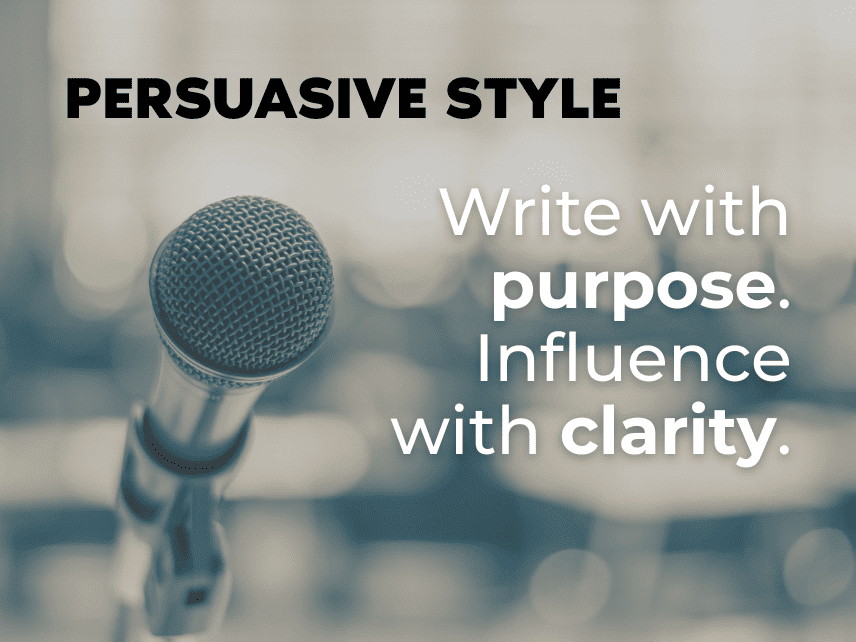
If expository writing informs, persuasive writing convinces.
The goal isn’t just to explain something — it’s to change what the reader believes, feels, or does. You're not handing them information and walking away. You're walking with them… and gently steering the conversation.
Think: essays, op-eds, sales copy, speeches, personal manifestos, fundraising appeals — anything where a point of view meets a call to action.
What It Is
Persuasive writing blends logic, emotion, and credibility to make a case.
You’ll often see it structured like this:
- Hook: a bold claim or question
- Argument: supporting evidence, anecdotes, reasoning
- Call to action: the moment you ask the reader to agree, believe, or act
It might sound formal or conversational. It might build a slow case or drop the hammer in the first line. The style shifts — the intent stays the same.
Real Example (Sales Copy)
“You don’t need a massive audience to sell your book. You just need the right readers — and a system to find them.”
Classic persuasive copy. Empathetic opener, believable promise, and the unspoken nudge: keep reading.
Real Example (Opinion Writing)
“Social media isn’t optional for authors anymore. If you’re not building a platform, you’re falling behind — whether you’re self-published or traditionally published.”
You may disagree. But that’s the point. Persuasive writing engages by taking a stance.
What to Look For
- Strong opening (often a problem, myth, or bold opinion)
- Emotional or logical appeals
- Active voice, confident tone
- Repetition for emphasis
- A clear “so what” or call to action
When done well, it’s not pushy — it’s helpful with a backbone.
Is This Style Right for You?
✅ Yes, if:
- You’re writing a sales page, opinion piece, or promotional content
- You want to inspire action or shift someone’s mindset
- You have a clear perspective and you’re not afraid to lead with it
❌ No, if:
- You haven’t decided what you actually believe yet
- Your “argument” is just a rambling story with a shrug at the end
- You’re writing a textbook, not a rallying cry
Tweetable Takeaway (aka X-cellent Insight)
Persuasive writing is storytelling with an agenda. The best kind? The kind where both sides win. If the reader feels they were guided, not shoved, you did it right.
If the reader feels like they were guided — not shoved — you did it right.
#5. Most Writing Uses a Blend (Bonus Style)
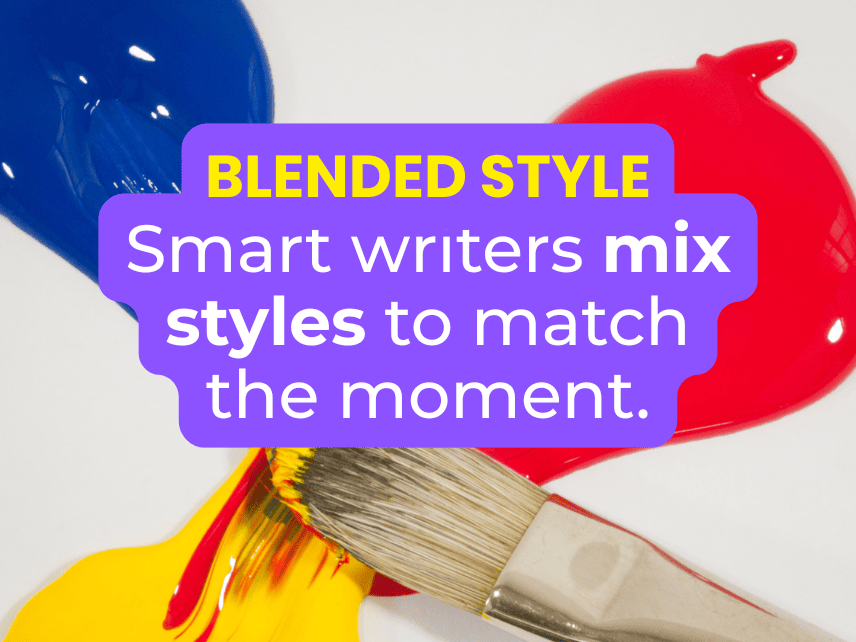
Here’s the truth most writing style guides don’t tell you:
Good writing rarely sticks to just one style.
A blog post might start with a personal story (narrative), break down a concept (expository), use vivid imagery (descriptive), and end with a strong takeaway (persuasive).
A novel might be 90% narrative — but without the right descriptive flourishes or persuasive dialogue, it falls flat.
Even a how-to guide like this one has probably used all four by now. (You caught that story about book ads failing, right?)
Fiction = Narrative + Descriptive
Characters need goals and stakes, but the world around them has to feel real.
Nonfiction = Expository + Persuasive
Teach clearly. Convince carefully. If you’re doing one without the other, your reader may understand your point — but they won’t care about it.
Marketing Copy = Persuasive + Descriptive
The message needs to sell — but the words need to feel like something.
Rigid categories are helpful when you’re learning.
But the real goal isn’t to pick a style and stick with it — it’s to understand the tools well enough to mix them with purpose.
Tweetable Takeaway (aka X-cellent Insight)
Writing styles aren't Hogwarts houses. You don't get sorted into one for life. You blend what you need to create the effect you want.
You blend what you need to create the effect you want. That’s not cheating — that’s skill.
What’s Your Natural Writing Style? (Mini Quiz)
Not sure which style fits you best?
This quick quiz won’t predict your future or tell you which punctuation mark is your soulmate.
But it will help you spot your default writing voice — and how to lean into (or out of) it with purpose.
Answer honestly. No one’s grading. (Except maybe your inner editor.)
1. You’re writing a blog post. What’s your instinctive starting point?
A) A personal story that sets the scene
B) A vivid image or metaphor
C) A list of key points or takeaways
D) A bold claim you’re ready to back up
2. What kind of feedback makes you happiest?
A) “I couldn’t stop reading — I had to know what happened.”
B) “Your writing made me feel like I was right there.”
C) “That made things finally click for me.”
D) “I’ve changed my mind because of what you wrote.”
3. Pick a sentence that feels most YOU:
A) “The wind screamed louder with every step she took.”
B) “The air smelled like burnt coffee and bad decisions.”
C) “There are three core reasons most authors struggle with launches.”
D) “If you think preorders are always a good idea… think again.”
4. What frustrates you most as a reader?
A) Flat characters with no motivation
B) Bland, emotionless writing
C) Long-winded tangents that never get to the point
D) Arguments with no evidence or backbone
5. Your ideal writing environment includes:
A) A notebook and some quiet time to map the arc
B) Mood lighting and a strong cup of something warm
C) A clean outline and clear deadlines
D) A headline that gets your heart rate up
6. You’d rather write:
A) A short story
B) A poem or scene description
C) A how-to guide
D) A manifesto or persuasive essay
7. When you read your own draft, you think:
A) “Does the story flow?”
B) “Is this vivid enough?”
C) “Is it clear and organized?”
D) “Does this land the point?”
Your Results:
Mostly A’s: Narrative Style
You’re a storyteller at heart. You’re drawn to characters, arcs, and emotional journeys.
Just remember: every scene needs a point, not just a vibe.
Mostly B’s: Descriptive Style
You have a gift for making words feel. Readers can taste the coffee and smell the rain — just keep an eye on pacing.
Mood is great. Momentum is better.
Mostly C’s: Expository Style
You’re a natural explainer. Clear, structured, helpful — you probably make killer checklists.
Just don’t forget the human side of the topic.
Mostly D’s: Persuasive Style
You write to shift beliefs or spark action. Confident, focused, and often spicy.
Just be sure to balance passion with clarity — the best arguments build, not bulldoze.
Mixed Results?
You might be a hybrid — which is a fancy way of saying “human.”
The best writers learn to switch styles based on the goal.
Use Style Like a Pro (Not a Formula)
Knowing your default writing style is a great start.
But the real magic happens when you blend styles intentionally — matching your tone to your goal, your structure to your reader, and your words to the moment.
And that's what most writing advice won’t tell you…
Your style doesn’t have to be fixed.
It’s not a box to stay inside. It’s a set of tools to pick from — sharpened over time, used with purpose.
If you’re writing fiction, you’ll lean narrative.
If you’re writing nonfiction, you’ll lean expository or persuasive.
If you’re writing anything worth reading, you’ll probably mix all four.
That’s not sloppy. That’s skill.
So:
- Learn the styles
- Practice the blends
- Borrow what works
- Drop what doesn’t
- And when in doubt… write like a real person
One sentence at a time.


